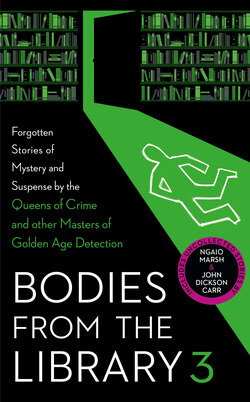Читать книгу Bodies from the Library 3 - Группа авторов - Страница 14
DOROTHY L. SAYERS
ОглавлениеDorothy L. Sayers (1893–1957) needs little introduction. Though she wrote comparatively few novels and short stories, they form an impressively consistent and enjoyable body of work, second only perhaps to that by Agatha Christie.
Without Sayers, Sherlockian scholarship would not be the flourishing pseudo-academic field it is today. And the Detection Club—founded by her contemporary Anthony Berkeley—would have languished as nothing more than a dining society for crime writers without the many collaborative books and radio serials that Sayers initiated as one of the Club’s most active members and as its President. Without Sayers’ reviews and penetrating insights into the art and artifice of the detective story, the genre would surely not have developed internationally as a field of academic study. And without the protean aristocrat Lord Peter Wimsey there would almost certainly be no Campion, no Dalgliesh and no Lynley, to name but a few of the detectives whose character and approach bear some mark of Sayers’ sleuth.
Sayers also wrote widely in many genres and, for some of her admirers, her crime stories and her studies of the genre are merely a distraction from even greater achievements: her analyses of Christian doctrine and her translations of Dante. For the majority, however, the reverse is certainly true.
There is the Wimsey canon—twenty-one short stories and eleven novels, several of which were memorably televised, first with Ian Carmichael (Lord Peter Wimsey, 1972–1975), and subsequently with Edward Petherbridge (A Dorothy L. Sayers Mystery, 1987). There are also the delightful stories of Montague Egg, a travelling wine salesman, and various non-series stories, the foremost being the extraordinary ‘Blood Sacrifice’. As with the best of her contemporaries, Sayers draws on tropes of the genre—the impossible crime, the invisible weapon and so on—to create puzzles that remain as entertainingly baffling today as when they were first published, in some cases nearly a century ago. And as with Charles Dickens, her work is peppered with memorable characters, not the least of whom is the detective novelist Harriet Vane, in many ways a self-portrait of Sayers.
‘Smith and Smith, Removals: I. The House of the Poplars’ by Dorothy L. Sayers is a previously unpublished manuscript held by the Marion E. Wade Center, Wheaton College, IL, USA, which has the largest and most comprehensive collection of published and unpublished resources by and about Sayers worldwide. The original manuscript is twenty-eight handwritten pages with revisions by Sayers; the Wade Center manuscript number is DLS/MS-187. It was the first of two stories written by Sayers in the 1920s featuring the removals firm of Smith and Smith. The other, ‘The Leopard Lady’, was collected in In the Teeth of the Evidence (1939) and filmed with Boris Karloff for the American television series Lights Out in 1950.
